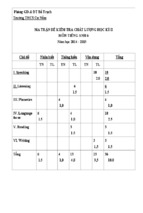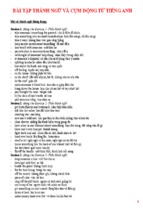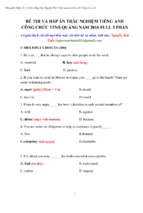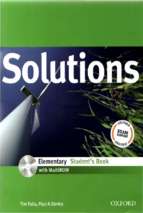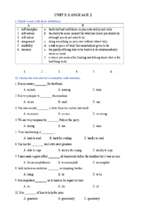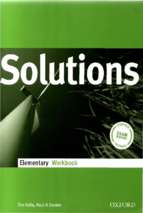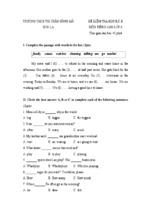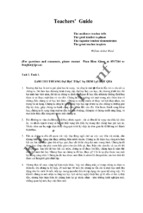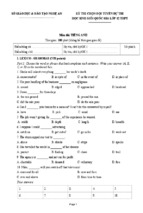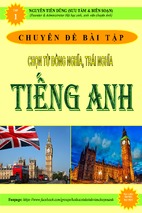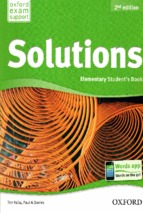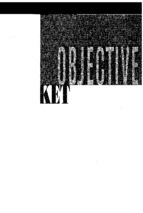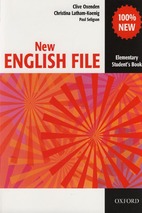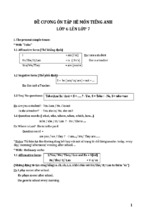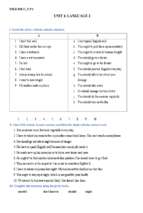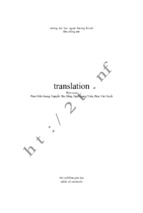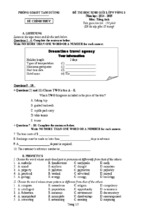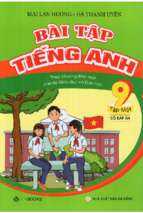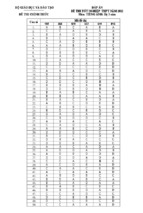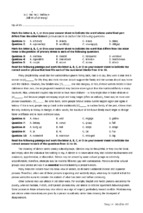20
20
BÀI TẬP CUỐỐI TUẦẦN TIẾỐNG ANH LỚP 7 – TẬP 2
ĐẠI LỢI
BÀI TẬP CUỐI TUẦN
TIẾNG ANH
LỚP 7 - TẬP 2
CÓ ĐÁP ÁN
NHÀ XUẤT BẢN ĐẠI HỌC QUỐC GIA HÀ NỘI
20
20
BÀI TẬP CUỐỐI TUẦẦN TIẾỐNG ANH LỚP 7 – TẬP 2
LỜI NÓI ĐẦẦU
Các em học sinh thân mến!
Các em đang cầm trên tay một trong những cuốn sách hay nhất và quan trọng
nhất trong quá trình học tiếng Anh của mình. Đó là cuốn sách Bài tập cuối tuần tiếng
Anh lớp 7 tập 2. Cuốn sách được ra đời với bao công sức của tác giả, giáo viên giàu
kinh nghiệm giảng dạy tiếng Anh. Cuốn sách được chia theo các đơn vị bài học và
bám sát chương trình học tập trên lớp của các em. Đây là một tài liệu cực kỳ hữu ích
nhằm giúp các em ôn tập, củng cố và nâng cao vốn tiếng Anh của mình.
Trong mỗi đơn vị bài học, chúng tôi đều trình bày đầy đủ các nội dung sau:
- Phần lý thuyết: Tập trung vào trọng tâm ngữ pháp của bài học
- Phần Week 1: Tập trung vào việc thực hành kiến thức ngôn ngữ của các em.
Các em sẽ được rèn luyện ngữ âm, từ vựng và ngữ pháp/ mẫu câu trong phần này.
- Phần Week 2: Phần này giúp rèn luyện và hoàn thiện cả 4 kỹ năng giao tiếp:
Nghe - Nói - Đọc - Viết tiếng Anh của các em.
Kết hợp với các nội dung trong sách là đĩa CD phát âm chuẩn tiếng Anh của
người bản ngữ. Chúng tôi tin rằng CD này sẽ hỗ trợ các em rất nhiều trong quá trình
rèn luyện kỹ năng giao tiếp tiếng Anh của mình.
Lời cuối cùng, chúng tôi mong muốn được gửi lời cảm ơn chân thành nhất tới
độc giả, tới các em học sinh, các bậc phụ huynh và các quý thầy cô đã giúp đỡ chúng
tôi rất nhiều trong quá trình biên soạn tài liệu quý báu này. Chúng tôi cũng mong
muốn được lắng nghe những ý kiến góp ý chân thành nhất của các bậc phụ huynh và
các thầy cô giáo để lần tái bản sau cuốn sách sẽ đầy đủ hơn, ý nghĩa hơn. Trân trọng!
20
20
BÀI TẬP CUỐỐI TUẦẦN TIẾỐNG ANH LỚP 7 – TẬP 2
Unit
7
TRAFFIC
WEEK 1
A THEORY: LANGUAGE KNOWLEDGE
❶ PRONUNCIATION
Ầm /e/
/e/ là một nguyên âm ngắắn. Để phát âm âm /e/ ta mở miệng vừa phải, hàm dưới h ạ
xuốắng một chút và mối thả lỏng.
Ầm /eɪ/
/eɪ/ là một nguyên âm đối. Để phát âm âm /eɪ/ ta phát âm hơi kéo dài từ /e/ dâần dâần
chuyển đêắn và kêắt thúc tại /ɪ/.
Các em thực hành phát âm các từ và các câu sau:
/e/
/eɪ/
check /tʃek/
h /eɪtʃ/
head /hed/
eight /eɪt/
scent /sent/
rain /reɪn/
met /met/
plane /pleɪn/
bell /bel/
wait /weɪt/
member /'membǝr/
later /'leɪtǝr/
jealous /'dʒelcs/
tasty /'teɪsti/
ready /'redi/
danger /'deɪndʒǝr/
many /'meni/
explain /ɪk'spleɪn/
breakfast /'brekfǝst/
exchange /ɪks'tʃeɪndʒ/
Send his friend a leterr
He came a day later.
/send hɪz frend ǝ 'letǝr/
/hi keɪm a deɪ 'leɪtǝr/
Let's rent a tent.
It was the grey day in May.
/lets rent ǝ tent/
/ɪt wǝz ðǝ greɪ deɪ ɪn meɪ/
Ben never gets upset.
Is this the way to the statonn
/ben nevǝr gets ʌp'set/
/ɪs ðɪs ðǝ weɪ tǝ ðǝ 'steɪfn/
Fred said it again and again.
We pray the grey day will go away.
/fred sed ɪt ǝ'gen ǝn ǝ'gen/
/wi preɪ ðǝ greɪ deɪ wɪl gǝʊ ǝ 'weɪ/
Peg slept from six untl ten and then lef.
Wait at the gate, I'll be there at eight.
/peg slept frǝm sɪks ʌn'tɪl ten ǝn ðen left/
/weɪt ǝt ðǝ geɪt aɪl bi ðeǝr ǝt eɪt/
❷ VOCABULARY
20
20
ENGLISH
TYPE
PRONUNCIATION
VIETNAMESE
vehicle
n
/ˈviːəkl/
phương tiện
helicopter
n
/ˈhelɪkɒptə(r)/
máy bay trực thăng
tricycle
n
/ˈtraɪsɪkl/
xe đạp 3 bánh
circle
n
/ˈsɜːkl/
vòng tròn
triangle
n
/ˈtraɪæŋɡl/
hình tam giác
helmet
n
/ˈhelmɪt/
mũ bảo hiểm
railway station
n
/ˈreɪlweɪ ˈsteɪʃn/
nhà ga
roof
n
/ruːf/
mái nhà
lane
n
/leɪn/
ngõ
pavement
n
/ˈpeɪvmənt/
vỉa hè
seat belt
n
/siːt belt/
thắt lưng
driving licence
n
/ˈdraɪvɪŋ ˈlaɪsns /
giấy phép lái xe
road sign
n
/rəʊd saɪn/
biển báo giao thông
traffic light
n
/ˈtræfɪk laɪt/
đèn giao thông
traffic jam
n
/ˈtræfɪk dʒæm/
sự tắc đường
traffic rule
n
/ˈtræfɪk ruːl/
luật giao thông
rush hour
n
/ˈrʌʃ ˈaʊə(r)/
giờ cao điểm
speed
n
/spiːd ˈlɪmɪt/
tốc độ giới hạn
zebra crossing
n
/ˈzebrə ˈkrɒsɪŋ/
vạch sang đường cho người đi bộ
bumpy
adj
/ˈbʌmpi/
bì bõm, lầy lội
illegal
adj
/ɪˈliːɡl/
bất hợp pháp
right-handed
adj
/ˌraɪt ˈhændɪd/
bên tay phải
prohibitive
adj
/prəˈhɪbətɪv/
ngăn ngừa, ngăn cấm
safe
adj
/seɪf/
an toàn
safety
n
/seɪfti/
sự an toàn
park
n
/pɑːrk/
công viên
reverse
adj
/rɪˈvɜːrs/
ngược, ngược chiều
obey
v
/əˈbeɪ/
tuân lệnh, vâng lời
BÀI TẬP CUỐỐI TUẦẦN TIẾỐNG ANH LỚP 7 – TẬP 2
warn
v
/wɔːrn/
cảnh báo
ride a bike
v
/raɪd ə baɪk/
đạp xe đạp
drive a car
v
/draɪv ə kɑː(r)/
lái xe ô tô
fy a plane
v
/flaɪ ə pleɪn/
lái máy bay
sail a boat
v
/seɪl ə bəʊt/
chèo thuyền
get on the bus
v
/ɡet ɒn ðə bʌs/
lên xe buýt
get off the train
v
/ɡet ɒn ðə treɪn/
xuống tàu
❸ GRAMMAR
1. It indicatng distance (Dùng it để nói vềề khoảng cách)
Chúng ta sử dụng it để chỉ khoảng cách giữa hai người, vật, địa điểm.
a. Form
(?) How far is it from + place 1 + to + place 2?
(+) It is (+ about) + distance.
Ví dụ:
How far is it from the supermarket to the museum?
It is two kilometres.
How far is it from the post office to the bank?
It is one kilometre.
2. Used to + Vinf (cấấu trúc used to + Vinf)
Chúng ta sử dụng used to + Vinf để diêễn tả một hành động hoặc một thói quen lặp đi
lặp lại nhiêầu lâần trong quá khứ và bây giờ khống còn nữa.
a. Form
(+)
S + used to + V-inf
(-)
S + didn’t use to + V-inf
(?)
Did + S + use to + V-ing ?
Ví dụ:
He used to walk to school when he was ten years old.
Mary didn’t use to go swimming every weekend when she was litle.
Did you use to cook when you were a student?
B PRACTICE
Exercise 1: Choose the word that has the underlined part pronounced
differently from the others.
1. A. gate
B. sensitive
C. date
D. fate
2. A. rain
B. they
C. bread
D. lake
3. A. anyone
B. many
C. head
D. safe
4. A. translation
B. dead
C. tender
D. measure
5. A. obey
B. leather
C. train
D. paint
6. A. breakfast
B. nation
C. afraid
D. preparation
7. A. stretch
B. jealous
C. neighbor
D. November
8. A. eight
B. invasion
C. play
D. member
9. A. liberation
B. eleven
C. heavy
D. steady
10. A. wait
B. grey
C. pleasure
D. weight
Exercise 2: Divide the words into two columns: /e/ or /ei/.
heavy
men
tomato
hence
bell
came
pleasure
later
extend
may
card
gel
way
cheque
draught
station
heart
dead
guard
away
pray
wait
ten
eight
bread
shell
shade
invader
race
hell
pay
start
leather
father
sharpen
aunt
sense
large
raise
terrace
/e/
/eı/
...............................
...............................
...............................
...............................
...............................
...............................
...............................
...............................
...............................
...............................
...............................
...............................
...............................
...............................
...............................
...............................
...............................
...............................
...............................
...............................
...............................
...............................
...............................
...............................
...............................
...............................
...............................
...............................
Exercise 3. a: Look at the pictures and complete the phrases under them.
20
20
BÀI TẬP CUỐỐI TUẦẦN TIẾỐNG ANH LỚP 7 – TẬP 2
1. bus s_ _ _
2. c_ _ _ _ lane
3. driving l_ _ _ _ _ _ 4. r_ _ _ _ _ _ station
5. seat b_ _ _
6. s_ _ _ _ limit
7. traffic l_ _ _ _
9. train t_ _ _ _ _
10. z_ _ _ _ crossing
8. t_ _ _ _ _ _ rule
Exercise 3. b: What is thisn
1. A road vehicle with an engine and four wheels that can carry a small number of
passengers. What’s this?
It’s a/ an.................................
2. A road vehicle with two wheels that you ride by pushing the pedals with your feet.
What’s this?
It’s a/ an.................................
3. A fying vehicle with wings and one or more engines. What’s this?
It’s a/ an.................................
4. A road vehicle with two wheels, driven by an engine. What’s this?
It’s a/ an.................................
5. A large vehicle for carrying heavy loads by road. What’s this?
It’s a/ an.................................
Exercise 4: Put the phrases under the correct road signs.
parking
no parking
no cycling
no right turn
zebra crossing
speed limit
no lef turn
hospital ahead
1 ..............................
2 ..............................
3 ..............................
4 ..............................
5 ..............................
6 ..............................
7 ..............................
8 ..............................
Exercise 5: Choose the best opton to fll in the blank.
1. There used to be fewer people and .................. on the roads.
A. roofs
B. helmets
C. helicopters
D. vehicles
2. Do you know the .................. in the UK is to keep to the lef?
A. traffic light
B. traffic rule
C. traffic jam
D. speed limit
3. It is dangerous to ride a motorbike without a ..................
A. helmet
B. triangle
C. tricycle
D. circle
4. In Hanoi, during rush hour, some road users ride their motorbikes on the ..................
A. driving licence
B. lane
C. pavement
D. seat belt
5. Traffic is terrible during the .................. when everyone is in a hurry to get to work or
come back home.
A. traffic light
B. road sign
C. traffic rule
D. rush hour
6. The ................ for motorcycles is 40 km/h in towns and 60 km/h outside urban areas.
A. speed limit
B. driving licence
C. traffic rule
D. traffic light
7. You must .................. the traffic rules in order to avoid accidents.
A. park
B. obey
C. reverse
D. warn
8. It takes us more than three hours to drive across those .................. roads.
A. wide
B. safely
C. right-handed
D. bumpy
C. get on the bus
D. get off the train
9. You need a driving licence to ..................
A. drive a car
B. ride a bike
10. The large supermarkets in Vietnam ofen let you .................. free.
A. park
B. obey
C. warn
D. fnd
11. Some vehicles beep when they .................. to warn those behind.
A. ride
B. reverse
C. drive
D. sail
12. Afer school, children queue up and wait for the bus .................. on the pavement in
front of the school.
A. safe
B. bumpy
C. safety
D. safely
Exercise 6: Changed into negatve and interrogatve form.
1. They used to play tennis twice a week.
..........................................................................................................................................
..........................................................................................................................................
2. I used to go to the gym three times a week.
20
20
BÀI TẬP CUỐỐI TUẦẦN TIẾỐNG ANH LỚP 7 – TẬP 2
..........................................................................................................................................
..........................................................................................................................................
3. Tennis used to be a sport for rich people only.
..........................................................................................................................................
..........................................................................................................................................
4. My father used to take me to see soccer games on Saturday.
..........................................................................................................................................
..........................................................................................................................................
5. He used to buy a new tennis racket.
..........................................................................................................................................
..........................................................................................................................................
Exercise 7: Rewrite the sentences with "used to".
1. They ofen went to Da Lat in the summer.
..........................................................................................................................................
2. We usually played soccer in the past.
..........................................................................................................................................
3. I got up earlier when I had work.
..........................................................................................................................................
4. Tom did his homework in the evening.
..........................................................................................................................................
5. Lan wrote to Mary twice a month.
..........................................................................................................................................
6. He worked at night when he worked in the supermarket.
..........................................................................................................................................
7. Did they watch TV in the past?
..........................................................................................................................................
8. She played badminton in her free time.
..........................................................................................................................................
9. They went swimming in the afernoon in 1990.
..........................................................................................................................................
10. He was a doctor in that hospital.
..........................................................................................................................................
Exercise 8: Give the correct form of the verbs in brackets: used to + V or
simple past. (1)
1. I (see) .................. Marcus at the library working hard. He told me to say hello to you.
2. She (be) ....................... a lot happier, but then she lost her job.
3. There (be) ....................... three restaurants in this town, but two closed down
leaving only one.
4. If you look over there, you can see the feld where they (fght) ....................... the
Batle of Harris Hill in 1509.
5. Did you (take) ....................... a lot of photos when you were in Moscow last year?
6. How many hours a day did you (go) ....................... to school when you were ten?
7. Children never (talk) ....................... so aggressively to their parents. It’s terrible!
8. Soldiers (build) ....................... this bridge near the end of the Second World War.
9. Your mother (have) ............................... a Yorkshire Terrier when she was a young
girl, didn’t she?
10. When I was fve, I (be) ....................... able to do incredible gymnastics. Now I can’t
even touch my toes.
Exercise 9: Give the correct form of the verbs in brackets: used to + V or
simple past. (2)
1. I (not play) ................................... computer games when I was a child, but now I
(play) ................................... a lot of games in the evening.
2. Mike (not smoke) ................................... before going to the army.
3. There (be) ................................... three parks in our village, but now there
(be) ................................... only one.
4. Murat
(like)
..................................
(eat) .................................. healthy food.
cheeseburgers,
but
now
he
5. She (not cook) ................................... before she got married, but now she
(cook) ................................... everything.
6. Alex (not have) ............................. a mobile
(send) .............................. text messages easily.
phone,
but
now
he
7. When I was single, I (have) ................................... big parties in my house, but now I
(watch) ................................... TV in the evenings.
8. When I was in Vietnam, I (watch)
................................... football matches at the
stadium. Now I (watch) ................................... on TV every weekend.
9. A: you (drink) ........................... a glass of milk every morning when you were a child?
B: Yes, I did, but now I (drink) ................................... a cup of coffee every morning.
10. My sister (love) ............................... classical music, but she (hate) ..............................
it when she was younger.
Exercise 10: Choose the best answer to complete these following sentences.
1. Astronauts ................. in their spaceship, but they frequently work outside now.
20
20
A. were used to stay
B. used to stay
C. were staying
D. had used to stay
BÀI TẬP CUỐỐI TUẦẦN TIẾỐNG ANH LỚP 7 – TẬP 2
2. People ................. that the earth is round before.
A. were not used to believe
B. used to believing
C. would not use to believe
D. did not use to believe
3. Tuberculosis ................. incurable before.
A. use to be thought
B. used to be thought
C. used to think
D. use to think
4. Formerly babies ................. of whooping cough.
A. have died
B. used to die
C. would die
D. both B and C
5. These city girls are used ................. in the feld.
A. to work
B. used to lie
C. would like
D. to working
6. Newton ................. scientifc books when being a boy.
A. used to read
B. has read
C. had read
D. bad been reading
7. I am sorry I am not ................. fast.
A. used to drive
B. used to driving
C. use to drive
D. use to driving
8. Frank used to work in a small shop. He .................
A. doesn’t any more
B. still does
C. is now
D. had never done anything else
9. I ................. in Jakarta. I’ve lived here all my life.
A. am used to living
B. used to living
C. use to live
D. am used to live
10. Jane ................. for the telephone company, but now she has a job at the post office.
A. used to working
B. used to work
C. is used to working
D. am used to work
11. This work doesn’t bother me. I ................. hard. I’ve worked hard all my life.
A. used to working
B. used to work
C. am used to working
D. am used to work
12. Dick ................. a moustache, but he doesn’t any more. He shaved it off because his
wife didn’t like it.
A. used to having
B. is used to having
C. was used to having
D. used to have
13. When I was a child, I ................. anyone 40 was old.
A. used to think
B. was used to thinking
C. used to thinking
D. was used to think
Exercise 11: Reorder the words to make correct sentences.
1. is/ to/ it/ from/ How far/ the hospital?/ the park
..........................................................................................................................................
2. is/ from/ three/ It/ here./ kilometers
..........................................................................................................................................
3. it/ the/ Is/ to/ the/ far/ library?/ from/ supermarket
..........................................................................................................................................
4. is/ National Museum?/ the/ Where
..........................................................................................................................................
5. is/ The National Park/ from/ kilometers/ the University./ fve
..........................................................................................................................................
6. is/ to/ 200/ It/ from/ Nghe An/ nearly/ Hanoi./ kilometers
..........................................................................................................................................
7. offices/ near/ Is/ post/ any/ here?/ there
..........................................................................................................................................
8. here/ It/ from/ is/ minute/ walk/ to/ fve/ the/ parking lot./ just / a
..........................................................................................................................................
9. is/ row/ from/ the frst/ to/ second/ the/ centimeters/ row./ It/ 30
..........................................................................................................................................
10. house/ My/ so/ is/ school,/ I/ walk./ my/ near
..........................................................................................................................................
Exercise 12: Write in full sentences.
1. It/ be/ about/ two kilometers/ my parents’ offices/ my school.
..........................................................................................................................................
2. be/ your grandfather’s house/ near/ here?
..........................................................................................................................................
3. How far/ your house/ National Library?
..........................................................................................................................................
4. be/ there/ a/ health center/ near/ here?
..........................................................................................................................................
5. What/ be/ distance/ between/ frst row/ second row?
..........................................................................................................................................
6. It/ be/ 20 centimeters/ my bed/ my desk.
..........................................................................................................................................
7. How far/ be/ it/ Lan’s house/ Mai Anh’s house?
..........................................................................................................................................
20
20
BÀI TẬP CUỐỐI TUẦẦN TIẾỐNG ANH LỚP 7 – TẬP 2
8. you/ live/ near/ here?
..........................................................................................................................................
9. be/ it/ 1000 kilometers/ Hanoi/ Ho Chi Minh City?
..........................................................................................................................................
10. Where/ be/ the Summer Restaurant?
..........................................................................................................................................
WEEK 2
Exercise 1: Listen and complete the text about trafc. (Track 13)
TRAFFIC
There is too much traffic on our roads. In (1) ....................., it may take 20 minutes to
go through a 02-kilometer road by (2) .....................
Everyone agrees that something has to be done to solve this problem. No one likes
to spend much time going to school or the (3) ..................... Going home takes even
more time.
It is not easy to build more or (4) ..................... the roads because it is expensive. So,
the answer here is to reduce the number of vehicles.
(5) ..................... may be the solution to the traffic jam.
The problem is that time is golden, so not everyone agrees to wait for
(6) ..................... of public transport such as buses or (7) ..................... Another problem
is that they may not like to be (8) .................... in a (9) .................... bus. The last problem
is that the buses cannot go in a small road, so some people who work in a small road will
have to walk for a while.
The answer to (10) ..................... has not been found out.
Exercise 2: Listen and decide if each statement is true or false or not given. (Track 14)
No.
1.
Statements
Garret A. Morgan lives in a rich family since he is born.
2.
3.
When he is 14, he does not study at school any more.
He is famous all over the world for his imagination.
4.
5.
He works in a sewing machine shop and fnds it interesting.
In 1901, he sells the idea of a special belt at the price of $150.
6.
Three years later, he invents a helmet and wins a silver medal for this
idea.
When Morgan witnesses the car accident of his mother, he thinks of
a traffic light.
7.
8.
Morgan spends the amount of money from selling the idea of traffic
light on an abroad trip.
T/F/NG
Exercise 3: Complete the dialogue with available words/ phrases.
welcome
bicycle
two
visit
How far
opposite
Excuse me
turn right
Khang:
We are going to (1) ........................... the National Museum.
Lan:
Great. I like to go there. (2) ..................... is it from my house to the museum?
Khang:
It’s about (3) ........................... kilometers.
Lan:
It’s not too far. How are we going there?
Khang:
We are going there by (4) ...........................
Lan:
Okay. Let’s go.
Khang:
(5) ..........................., where is the National Museum?
Woman:
Go straight for about 100 meters, (6) ......................., go straight again for 200
meters and turn lef. The museum is (7) ........................ the Italian restaurant.
Khang and Lan: Thank you very much.
Woman:
You’re (8) ...........................
Exercise 4: Look at the pictures and answer the questions.
1. What can you do when you see this sign?
2. What does this sign mean?
.......................................................
.......................................................
3. Can you ride a bike here?
4. Can’t we drive a trucks here?
.......................................................
.......................................................
5. What does this sign mean?
6. Does this mean there is a parking lot
here? If not, what does it mean?
.......................................................
.......................................................
20
20
BÀI TẬP CUỐỐI TUẦẦN TIẾỐNG ANH LỚP 7 – TẬP 2
7. What can we do when we see this sign?
8. What does this sign mean?
.......................................................
.......................................................
Exercise 5: Read and decide if each statement is true or false or not given.
Hello. My name is Lucy. Last week I went to visit my friend Samantha in Spring Town.
That was my frst visit to Spring Town, and I rode my motorbike to Samantha’s house.
Firstly I saw a No U-turn signal. So I had to ride forward until I see a U-turn signal. I
turned and kept riding, then I noticed the crossroad sign and check my map. I saw that I
had to turn lef. But the red traffic light was on, and I had to wait for 60 seconds. I
turned lef and I got stuck in a traffic jam. I waited there for nearly 15 minutes. There
was a car accident there, a car hit a motorbike and ran. At that time the motorcyclist
was moved to the hospital. I could keep my riding. Unfortunately, my phone was out of
charge, so I could not check my map and had to ask people there for route. Afer one
hour and 02 times of geetng lost, I fnally reached my friend’s home. It is unbelievable.
No.
Statements
Samantha and Lucy lives in Spring Town.
T
F
NG
1.
2.
Lucy rode her bike to Samantha’s house.
3.
Lucy turned back when she saw No U-turn signal.
4.
5.
It was about 02 kilometers from Lucy'’s house to Samantha’s
house.
The red traffic light was on for one minute.
6.
Lucy did not get stuck in traffic jam.
7.
There was an accident on the way to Samantha’s house.
8.
Lucy got lost one time on the way to Samantha’s house.
Exercise 6: Read and answer the questons.
TRAFFIC JAM
For many years, Daniel has been driving to work and back home every weekday.
Every morning, on his way to work, especially during rush hours, the highways are
usually crowded causing traffic jam. The situation is even worse in the evening when he
drives home. If there is an accident or a car has broken down and block the lane, most of
drivers have to wait for hours or turn back to go on another route. In the winter,
especially when it snows, it is strongly for vehicles to move on thick layer of snow. Many
people have to leave their vehicles outside and walk home because they completely
cannot move. Daniel feels really tired when he is stuck in a traffic jam, so he usually
listens to music and waits until the end of traffic jam.
1. How does Daniel go to work?
..........................................................................................................................................
2. What happen with the highways during rush hours?
..........................................................................................................................................
3. What do the drivers do when the lane is block?
..........................................................................................................................................
4. Why is it difficult for vehicles to move in winter?
..........................................................................................................................................
5. How is the lawyer of snow?
..........................................................................................................................................
6. What do some people do when their cars are stuck in snow?
..........................................................................................................................................
7. How does Daniel feel when he is stuck in a traffic jam?
..........................................................................................................................................
8. What does Daniel do while waiting until the end of traffic jam?
..........................................................................................................................................
Exercise 7: Answer the questons.
1. How far is it from your house to your school?
..........................................................................................................................................
2. How do you go to school?
..........................................................................................................................................
3. Is there a bus stop near your home?
..........................................................................................................................................
4. Do you have a driving license?
..........................................................................................................................................
5. What bus did you catch yesterday?
..........................................................................................................................................
6. Is there a no-cycling sign near your house?
..........................................................................................................................................
7. Have you travelled by plane? If yes, where have you gone?
..........................................................................................................................................
8. What should we do when we see the red light?
..........................................................................................................................................
Exercise 8: Write a short paragraph about the trafc in your city.
................................................................................................................................................
20
20
BÀI TẬP CUỐỐI TUẦẦN TIẾỐNG ANH LỚP 7 – TẬP 2
- Xem thêm -


